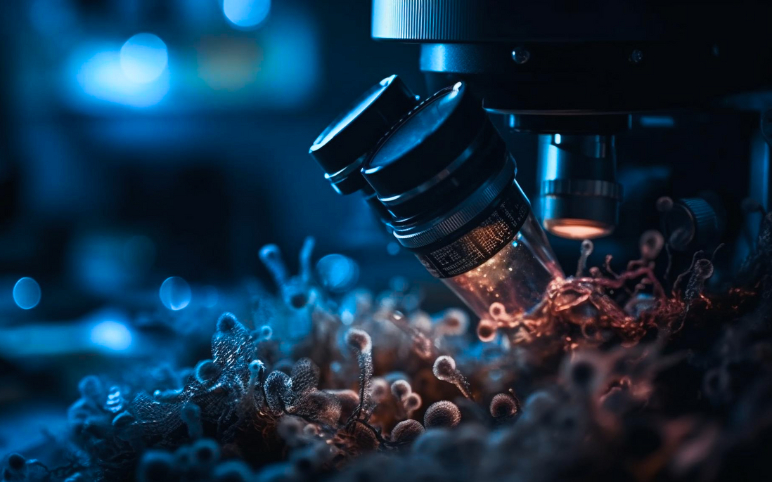How HR+/ HER2-Breast Cancer Emerging Drugs Will Transform The Market?
Aug 08, 2024
More than a dozen companies have shifted their focus toward the development of HR-positive/HER2-negative breast cancer drugs. Some of them are Regor Therapeutics, Seagen Inc., CytomX Therapeutics, Taizhou EOC Pharma, Chia Tai Tianqing Pharmaceutical Group, AstraZeneca, Daiichi Sankyo, Inc., Tyme, Inc., Seagen Inc., Context Therapeutics, Eisai Inc., Shanghai Hengrui Pharmaceutical Co., Ltd., and others. The primary goal of early HR+/HER2- breast cancer therapy is to enhance disease-free survival and overall survival with current treatments while minimizing long-term side effects. Advances in local therapies, such as breast-conserving surgery, sentinel lymph node biopsy, and intraoperative radiotherapy, have reduced long-term complications compared to more invasive treatments. Endocrine therapy remains central to adjuvant treatment due to its effectiveness in lowering relapse and mortality rates. Adjuvant chemotherapy is now recommended only for high-risk patients, determined by genomic assays, age, or disease stage, who may benefit from additional intervention. Bisphosphonates help reduce the risk of bone metastasis and provide a modest, statistically significant survival benefit in postmenopausal women. Recently, the US FDA approved the CDK 4/6 inhibitor abemaciclib for high-risk patients to further mitigate relapse.
Talking about existing drugs for the treatment of HR+/HER2- breast cancer, KISQALI made its debut in the treatment landscape for HR+/HER2– metastatic breast cancer in March 2017, earning FDA approval for use with an aromatase inhibitor (AI) in postmenopausal women. This approval followed the impressive results from the pivotal Phase III MONALEESA-2 trial, which highlighted KISQALI’s superior efficacy and safety when paired with letrozole compared to letrozole alone. By July 2018, KISQALI expanded its horizons with FDA approval for use in combination with an AI for pre-and perimenopausal women with advanced or metastatic breast cancer, marking a significant advancement in initial endocrine-based therapy options. Today, KISQALI stands out as the only CDK4/6 inhibitor approved for use with an AI across all menopausal stages in the US and is also indicated for use with fulvestrant as both a first- and second-line treatment for postmenopausal women. Novartis is further advancing KISQALI’s potential with the ongoing Phase III NATALEE trial, targeting HR+/HER2– early breast cancer patients.
New HR+/ Her2-Breast Cancer Drug Candidates Poised To Disrupt The Market Leaders
Over the past decade, endocrine therapy has been the cornerstone for managing HR-positive and HER2-negative metastatic breast cancer. This approach, primarily involving antiestrogens and aromatase inhibitors (AIs) such as anastrozole, letrozole, and exemestane, has established a solid foundation for treatment. However, recent innovations within the HR+/HER2- breast cancer pipeline have introduced new modalities that are beginning to disrupt this established paradigm.
Downloads
Article in PDF
Recent Articles
- Systemic Lupus Erythematosus (SLE) – Market Is Expected to Grow with Upcoming Therapies
- Business Cocktail
- ALCMI, ALCF and Scancell partner; Sun unloads Ohm Labs plants; Takeda and Ovid join; Guardant and...
- Now, Nanoparticles for Cancer Treatment
- Novartis buys Medicines; Blackstone Life Sciences and Ferring’s collaboration; Alexion̵...
The addition of CDK4/6 inhibitors—ribociclib, palbociclib, and abemaciclib—to endocrine therapy has notably enhanced progression-free survival (PFS) in patients. These inhibitors, featured in landmark trials like MONALEESA-2, PALOMA-2, and MONARCH-3, have significantly improved outcomes compared to traditional treatments. The advent of ENHERTU (a HER2-low targeted therapy) and TRODELVY (approved for previously treated HR-positive, HER2-negative breast cancer) has further expanded treatment options.
Among the new contenders, Camizestrant—a next-generation oral selective estrogen receptor degrader (SERD)—shows promise with its potent anti-cancer activity, including efficacy in preclinical models with ER-activating mutations. It is currently being tested in a Phase III trial, both alone and in combination with palbociclib. Datopotamab deruxtecan (Dato-DXd), an ADC targeting TROP2, is in Phase III trials and represents one of the most advanced therapies in Daiichi Sankyo’s pipeline, utilizing a proprietary ADC technology that delivers a topoisomerase I inhibitor payload to cancer cells.
CX-2009, another promising drug, is a Probody drug conjugate that combines a humanized anti-CD166 monoclonal antibody with DM4, a potent microtubule inhibitor. It is undergoing Phase II trials for HR-positive/HER2-negative breast cancer and is being evaluated in combination therapies. RGT-419B, a novel CDK inhibitor, is also in Phase I trials and aims to address unmet needs in patients who are resistant to previous treatments, potentially improving survival and quality of life for those with advanced breast cancer.
These emerging HR+/HER2- breast cancer therapies highlight a shift towards more personalized and targeted treatment approaches, addressing resistance mechanisms and expanding options for patients with challenging breast cancer subtypes. As research continues to evolve within the HR+/HER2- breast cancer treatment landscape, these new HR+/HER2- breast cancer drugs are expected to play a crucial role in reshaping the therapeutic landscape and offering renewed hope for better outcomes.
Conclusion
Given the surge in HR-positive/HER2-negative breast cancer therapies nearing market launch, the upcoming period will likely witness a highly competitive landscape. With several innovative treatments set to debut around the same time, a discernible difference in market share among these therapies has not yet emerged. The intense competition in the HR-positive/HER2-negative breast cancer market reflects the industry’s race to capture market share and address the evolving needs of breast cancer patients.




